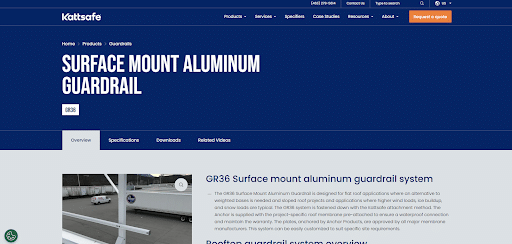The construction industry stands at a pivotal moment as we progress through 2025, with transformative technologies and evolving market demands reshaping how projects are planned, executed, and delivered. Global construction output is projected to grow by 85% to $15.5 trillion worldwide by 2030, driven by urbanization, infrastructure investments, and technological innovation.
From artificial intelligence and automation to sustainable building practices and advanced materials, the industry is experiencing unprecedented change that promises to improve efficiency, safety, and environmental impact.
Understanding these emerging trends is crucial for construction professionals, project managers, and industry stakeholders who want to remain competitive and capitalize on new opportunities in this rapidly evolving landscape.
Table of Contents
Digital Transformation and Smart Construction Technologies
Artificial Intelligence and Machine Learning Integration
Artificial intelligence has moved from experimental applications to practical implementation across construction projects. AI-powered systems now optimize project scheduling, predict equipment maintenance needs, and analyze job site safety risks in real-time.
Machine learning algorithms process vast amounts of project data to identify patterns that help contractors avoid cost overruns and schedule delays. These technologies enable predictive analytics that can forecast potential issues before they impact project timelines or budgets.
Internet of Things (IoT) and Connected Job Sites
Construction sites are becoming increasingly connected through IoT sensors that monitor equipment performance, environmental conditions, and worker safety metrics.
Smart sensors track concrete curing temperatures, monitor structural stress levels, and provide real-time location data for equipment and materials. This connectivity creates comprehensive digital twins of construction projects that enable better decision-making and more efficient resource allocation.
Advanced Building Information Modeling (BIM)
BIM technology continues evolving beyond 3D modeling to incorporate 4D scheduling, 5D cost estimation, and 6D facility management capabilities.
Cloud-based BIM platforms enable real-time collaboration between architects, engineers, contractors, and clients, reducing errors and improving project coordination. The integration of AI with BIM systems now provides automated clash detection, optimized material quantities, and enhanced design alternatives.
Automation and Robotics Revolution
Autonomous Construction Equipment
Autonomous bulldozers, excavators, and other heavy machinery are becoming more prevalent on construction sites, offering improved precision and safety.
These machines operate with GPS guidance systems and can work continuously without fatigue, increasing productivity while reducing human exposure to hazardous conditions. Autonomous equipment particularly excels in repetitive tasks like site preparation, material handling, and basic construction operations.
Robotic Assembly and 3D Printing
Construction robots now perform complex tasks including bricklaying, welding, and concrete pouring with greater accuracy than traditional methods.
Large-scale 3D printing enables on-site construction of building components and even entire structures using concrete, steel, and composite materials. These technologies significantly reduce construction timelines while improving structural precision and minimizing material waste.
Drone Technology Applications
Unmanned aerial vehicles have become standard tools for site surveying, progress monitoring, and safety inspections.
Drones equipped with high-resolution cameras and LiDAR sensors create detailed topographical maps, track construction progress, and identify potential safety hazards from aerial perspectives. Advanced drone systems can now perform autonomous inspections of tall structures and hard-to-reach areas.
Sustainable Construction Practices
Green Building Materials and Methods
The construction industry is embracing sustainable materials including recycled steel, bamboo composites, cross-laminated timber, and bio-based concrete alternatives.
These materials reduce environmental impact while often providing superior performance characteristics. Green construction methods focus on minimizing waste, reducing energy consumption, and incorporating renewable energy systems into building designs.
Circular Economy Implementation
Circular economy principles are transforming construction waste management and material sourcing. Projects now prioritize material reuse, component disassembly for future use, and waste-to-resource conversion. This approach reduces landfill contributions while creating new revenue streams from construction byproducts.
Energy-Efficient Building Systems
Advanced HVAC systems, smart lighting controls, and integrated renewable energy solutions are becoming standard in new construction.
Building automation systems optimize energy consumption based on occupancy patterns and environmental conditions, significantly reducing operational costs and carbon footprints.
Advanced Equipment and Electronics Integration
Smart Equipment Monitoring Systems
Modern construction equipment incorporates sophisticated electronic monitoring systems that track performance metrics, fuel consumption, and maintenance requirements.
These systems provide real-time diagnostics and predictive maintenance alerts that minimize downtime and extend equipment lifecycles. Companies specializing in construction electronics, such as Crane Electronics, provide essential components and systems that enable this advanced monitoring and control functionality across various types of construction machinery.
Telematics and Fleet Management
Telematics systems provide comprehensive fleet management capabilities including GPS tracking, fuel monitoring, operator behavior analysis, and automated reporting. These systems help construction companies optimize equipment utilization, reduce operating costs, and improve safety compliance across their fleets.
Electronic Load Monitoring and Safety Systems
Advanced electronic systems monitor load capacities, boom angles, and operational parameters on cranes and heavy lifting equipment. These safety systems prevent overloading, ensure proper equipment operation, and provide real-time alerts to operators about potentially dangerous conditions.
Workforce Development and Safety Innovation
Digital Skills Training and Certification
The construction workforce is adapting to new technologies through digital training programs, virtual reality simulations, and online certification courses. These programs address the skills gap while preparing workers for technology-integrated construction environments. Augmented reality training systems allow workers to practice complex procedures in safe, virtual environments.
Wearable Safety Technology
Smart helmets, safety vests with embedded sensors, and wearable environmental monitors provide real-time safety data and emergency alerts. These devices track worker vital signs, detect falls, monitor exposure to hazardous materials, and ensure compliance with safety protocols. Integration with job site networks enables immediate emergency response when safety incidents occur.
Remote Work Integration
Construction projects increasingly incorporate remote work capabilities through digital collaboration tools, virtual project meetings, and cloud-based project management systems. This trend enables better work-life balance while reducing travel costs and improving project coordination across geographically distributed teams.
Modular and Prefabricated Construction Growth
Off-Site Manufacturing Advantages
Prefabricated construction components manufactured in controlled factory environments offer superior quality control, reduced weather delays, and improved worker safety. Off-site manufacturing enables parallel construction processes that significantly reduce project timelines while maintaining high quality standards.
Modular Design Flexibility
Modern modular construction systems provide greater design flexibility and customization options compared to traditional approaches. These systems enable rapid assembly of complex structures while maintaining architectural variety and meeting specific project requirements.
Quality Control and Standardization
Factory-based construction processes implement rigorous quality control measures and standardized procedures that reduce defects and ensure consistent outcomes. This approach minimizes rework and improves overall project quality while reducing construction costs.
Frequently Asked Questions
How is artificial intelligence specifically being used in construction projects today?
AI applications in construction include automated project scheduling optimization, predictive maintenance for equipment, safety risk analysis through computer vision, cost estimation and budget forecasting, and quality control through automated defect detection. These systems process historical project data to provide actionable insights for improved decision-making.
What are the main benefits of IoT technology on construction sites?
IoT sensors provide real-time monitoring of equipment performance, environmental conditions, material inventory levels, and worker safety metrics. This connectivity enables predictive maintenance, improved resource allocation, enhanced safety compliance, and better project coordination through comprehensive data collection and analysis.
How do sustainable construction practices impact project costs and timelines?
While sustainable materials and methods may have higher upfront costs, they typically provide long-term savings through reduced energy consumption, lower maintenance requirements, and improved durability. Many sustainable practices also qualify for tax incentives and green building certifications that add project value.
What skills do construction workers need to develop for the evolving industry?
Essential skills include basic computer literacy, familiarity with digital collaboration tools, understanding of automated equipment operation, knowledge of safety technology systems, and adaptability to new construction methods. Many companies provide training programs to help workers transition to technology-integrated construction environments.
How reliable are autonomous construction equipment and robotics systems?
Modern autonomous construction equipment demonstrates high reliability through extensive testing and gradual implementation. These systems typically include multiple safety redundancies and human oversight capabilities. While full autonomy is still developing, current semi-autonomous systems significantly improve productivity and safety when properly implemented and maintained.
Conclusion
The construction industry’s transformation in 2025 represents a fundamental shift toward technology-driven, sustainable, and efficient building practices.
From AI-powered project management and autonomous equipment operation to sustainable materials and advanced safety systems, these trends are reshaping how construction projects are conceived, planned, and executed.
The integration of digital technologies with traditional construction expertise creates unprecedented opportunities for improved productivity, safety, and environmental responsibility.
Success in this evolving landscape requires embracing technological innovation while maintaining focus on fundamental construction principles and safety standards.
Companies that invest in digital transformation, workforce development, and sustainable practices position themselves for long-term competitive advantage in an industry experiencing rapid change.
As these trends continue developing throughout 2025 and beyond, construction professionals who adapt early will lead the industry’s evolution toward more efficient, safe, and sustainable building practices.
The future of construction lies in the seamless integration of human expertise with advanced technology, creating an industry that builds better structures while protecting workers, communities, and the environment.
Understanding and implementing these trends today prepares construction companies for sustained success in tomorrow’s transformed industry landscape.





